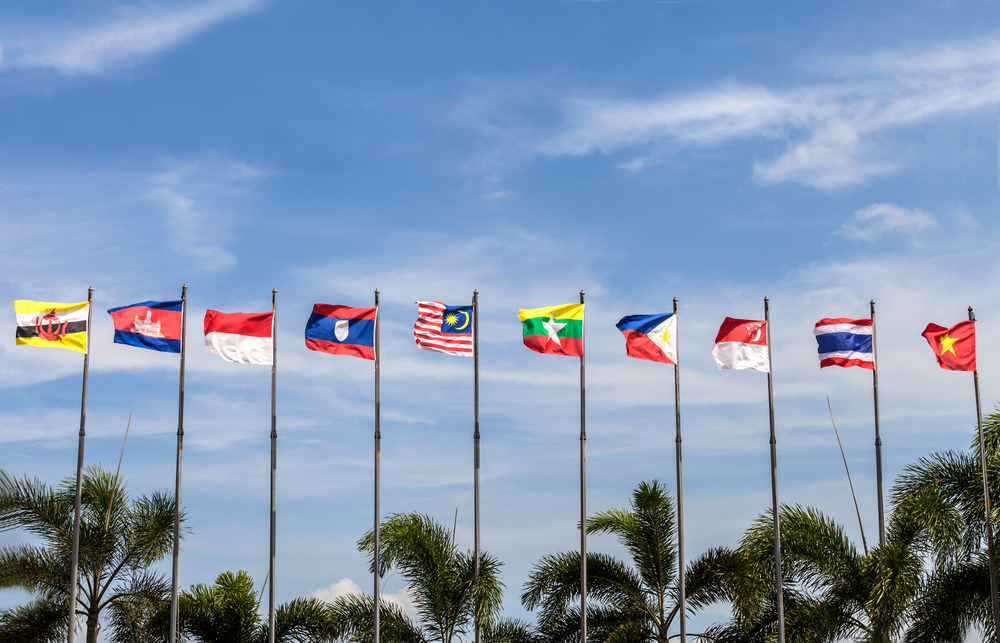Viewing the AEC as a Work in Progress will not Help it Achieve its Goals

Please note that we are not authorised to provide any investment advice. The content on this page is for information purposes only.
As the ASEAN Economic Community’s (AEC) December 2015 deadline approaches, most observers feel that the initiative’s deliverables — an integrated production space with free movement of goods, services, and skilled labour — are unachievable. This may be true. However, the AEC is a work in progress. Simply, it will miss its deadline is to ignore other crucial facts about the AEC’s role and circumstances.
As the ASEAN Economic Community’s (AEC) December 2015 deadline approaches, most observers feel that the initiative’s deliverables — an integrated production space with free movement of goods, services, and skilled labour — are unachievable. This may be true. However, the AEC is a work in progress. Simply, it will miss its deadline is to ignore other crucial facts about the AEC’s role and circumstances.
While lessons have been derived from the European Union, the AEC was not developed based on this model. Since ASEAN’s inception, the sovereignty of nation-states and non-interference in domestic matters were key principles guiding the organisation. Economic cooperation was sought in areas where it was deemed necessary. This included allowing for economies of scale and multinationals doing business in Southeast Asia, and anchoring production networks that were already developing in the broader Asian region. Economic cooperation was seen as a gradual process, with long-term aspirations, rather than a mechanism in which strict rules apply irrespective of the nature of member economies and changing global conditions.
Although the AEC is a regional initiative, it is implemented by national economies. Domestic law and policy is required to do things like cut tariffs, remove non-tariff barriers and liberalise the services sector. This can be difficult because each initiative is not the sole preserve of any one body but involves multiple ministries and other agencies. That some domestic economic actors stand to gain or lose from integration means that the AEC generates proponents and opponents. In addition, this slows down the pace of implementation further.
However, the AEC is not the sole cause of increasing competition in domestic economies. The AEC vision was developed with an awareness of current global economic trends. The 10 ASEAN countries realised that their own WTO ascension would not lead to quick outcomes in a forum of 150 other countries at different stages of economic development. There the concerns and objections of small economies, like the ones in Southeast Asia, are not likely to be heard.
In contrast, ASEAN and the AEC are small enough to consider the interests of all and may accord short-term flexibility. While this is likely to slow down the establishment of the AEC, advanced member countries — such as Singapore, Malaysia and Thailand — are not restricted to only this framework. All of them have pursued bilateral free trade agreements with their key trading partners. Therefore, for any single country, heightened competition is a part of the globalisation process. In addition, there are other frameworks — be they bilateral, regional or multilateral — that can further economic liberalisation.
ASEAN economic cooperation is a top-down initiative and hence awareness among stakeholders is low and uneven. The association was instituted in 1967 to promote peace and stability. It took another decade for economic cooperation to make the agenda. However, economic cooperation has become a form of diplomacy that is often carried out by foreign ministries in consultation with commerce or trade ministries.
Some have observed that economic regionalism in Southeast Asia is the subject of political elites, with almost no involvement from other stakeholders. This has been accompanied by a low level of awareness of relevant economic cooperation measures, particularly among the final users.
With the looming 2015 deadline, they are now listening to the private sector. In addition, advocacy for trade initiatives by the private sector is not unanimous. It is often driven by the relative strength of particular firms that bring foreign direct investment into the country.
Finally, the AEC should not be seen in isolation from, but rather in conjunction with, the ASEAN Political-Security Community and ASEAN Socio-Cultural Community. A political security community works towards regional peace and stability, while a socio-cultural community encompasses regional cooperation in areas like environmental protection, limiting the spread of contagious diseases, transnational crime and cooperation when responding to natural disasters. It is hoped that, when combined, these initiatives will help to cultivate a sense of regional identity.
The AEC is a work in progress. Some promises have been met, but significant challenges also remain. Awareness among policymakers and final users is growing. ASEAN is often criticised for weak institutions, which has also made AEC implementation difficult. Only time will only tell how much of this can be changed. With the AEC and ASEAN Charter, the region has already evolved as a rules-based association.
Now is the time for ASEAN countries to come together to strengthen the economic community. The global economy has been in a constant state of flux since the 2008 economic crisis. While the AEC may not deliver on a fully integrated single market and production base for ASEAN stakeholders in 2015, it will help ASEAN members to withstand the next global crisis with confidence.
Slow but steady for the ASEAN Economic Community is republished with permission from East Asia Forum




